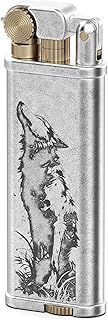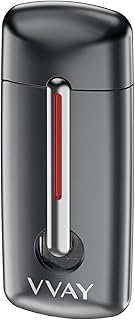VVAY Lighter: Durability and Performance Test
This document outlines a comprehensive test plan for evaluating the durability and performance of a VVAY lighter. The goal is to assess its reliability, longevity, and overall quality.
1. Test Objectives:
* Durability: Determine the lighter's resistance to wear and tear under various conditions.
* Performance: Evaluate the lighter's ability to reliably ignite a flame and its flame characteristics.
* Safety: Assess potential safety hazards and compliance with relevant standards.
2. Test Methodology:
2.1 Durability Tests:
* Drop Test: Drop the lighter from various heights (1 meter, 2 meters, 3 meters) onto a hard surface (concrete) multiple times. Observe any damage to the lighter's casing, mechanism, or fuel tank.
* Crush Test: Apply increasing pressure to the lighter's casing using a calibrated force gauge until it breaks. Record the maximum force applied before failure.
* Water Resistance Test: Submerge the lighter in water (at room temperature) for a specified duration (e.g., 30 minutes). Dry it thoroughly and check for functionality.
* Temperature Cycling Test: Expose the lighter to extreme temperatures (e.g., -20��C to +60��C) for multiple cycles, observing any changes in its performance or appearance.
* Wear and Tear Test: Subject the lighter to simulated daily use (e.g., igniting multiple times, carrying in a pocket) over an extended period. Monitor any signs of wear or malfunction.
2.2 Performance Tests:
* Ignition Test: Perform multiple ignition attempts under different conditions (e.g., windy, humid) and record the success rate, ignition time, and flame characteristics (size, stability, color).
* Fuel Consumption Test: Measure the lighter's fuel consumption rate over a specified period (e.g., 1 hour) while igniting continuously.
* Flame Duration Test: Measure the duration of the continuous flame produced by the lighter under standard conditions.
* Flame Temperature Test: Use a calibrated thermometer to measure the flame temperature of the lighter.
2.3 Safety Tests:
* Leakage Test: Fill the lighter with fuel and observe for any leakage from the tank, valve, or other components.
* Safety Valve Test: Perform multiple ignition attempts and observe the safety valve's function to prevent excessive fuel release.
* Flammability Test: Conduct a flammability test on the lighter's fuel and materials to assess fire hazard.
3. Data Analysis:
* Record all test results: Document the number of successful ignitions, failure points, leakage, damage, and any other observed anomalies.
* Analyze the data: Compare the performance and durability results to pre-determined criteria or industry standards.
* Interpret the findings: Draw conclusions about the overall performance, durability, and safety of the VVAY lighter.
4. Reporting:
* Summarize the test results: Provide a comprehensive report detailing the methodology, findings, and analysis.
* Highlight any areas of concern: Identify any weaknesses in the lighter's design or performance.
* Provide recommendations: Suggest improvements to enhance the lighter's durability, performance, and safety.
5. Conclusion:
This test plan provides a framework for evaluating the VVAY lighter's durability, performance, and safety. The results of these tests will help determine the lighter's overall quality and suitability for its intended purpose.


